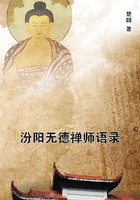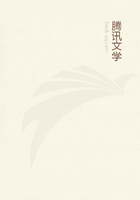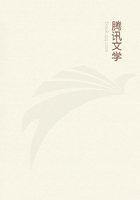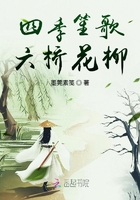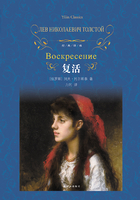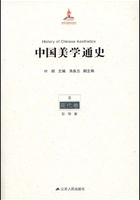Corn is the principal crop and support of the Moquis. If there is a good crop the surplus is stored away and kept to be used in the future should a crop fail. The corn is planted in irregular hills and cultivated with a hoe. It is dropped into deep holes made with a stick and covered up. There is always enough moisture in the sand to sprout the seed which, aided by an occasional shower, causes it to grow and mature a crop. The corn is of a hardy, native variety that needs but little water to make it grow. The grain is small and hard like popcorn and ripens in several colors.
It is carried home from the field by the men, and ground into meal by the women. The sound of the grinding is heard in the street and is usually accompanied by a song that sounds weird but musical. The meal is ground into different grades of fineness and when used for bread is mixed with water to form a thin batter which is spread by the hand upon a hot, flat stone. It is quickly baked and makes a thin wafer that is no thicker than paper. When done it is removed from the stone by the naked hand and is rolled or folded into loaves which makes their prized pici bread. It is said to be only one of fifty different methods which the Moquis have of preparing corn for the table, or about twice the number of styles known to any modern chef.
The Moqui woman is favored above many of her sex who live in foreign lands. As a child she receives much attention and toys galore, as the parents are very fond of their children and devote much time to their amusement. They make dolls of their Katcinas which are given to the children to play with. A Katcina is the emblem of a deity that is represented either in the form of a doll carved out of wood, woven into a plaque or basket, or painted on tiles and pottery. There are between three and four hundred Katcina dolls each one representing a different divinity.
When a doll is given to a child it is taught what it means, thus combining instruction with amusement. The method is a perfect system of kindergarten teaching, which the Moquis invented and used centuries before the idea occurred to Froebel.
When the girl is ten years old her education properly begins and she is systematically inducted into the mysteries of housekeeping. At fifteen she has completed her curriculum and can cook, bake, sew, dye, spin and weave and is, indeed, graduated in all the accomplishments of the finished Moqui maiden. She now does up her hair in two large coils or whorls, one on each side of the head, which is meant to resemble a full-blown squash blossom and signifies that the wearer is of marriageable age and in the matrimonial market. It gives her a striking yet not unbecoming appearance, and, if her style of coiffure were adopted by modern fashion it would be something unusually attractive. As represented by Donaldson in the eleventh census report the handsome face of Pootitcie, a maiden of the pueblo of Sichomovi, makes a pretty picture that even her white sisters must admire. After marriage the hair is let down and done up in two hard twists that fall over the shoulders.
This form represents a ripe, dried squash blossom and means fruitfulness.
Her dress is not Spanish nor yet altogether Indian, but is simple, comfortable and becoming, which is more than can be said of some civilized costumes. She chooses her own husband, inherits her mother's name and property and owns the house in which she lives. Instead of the man owning and bossing everything, as he so dearly loves to do in our own civilization, the property and labor of the Moqui husband and wife are equally divided, the former owning and tending the fields and flocks and the latter possessing and governing the house.
The Moquis are famous for their games, dances and festivals, which have been fully described by Dr. J. Walter Fewkes in various reports to the Smithsonian Institution. They have many secret orders, worship the supernatural, and believe in witchcraft. Their great fete day is the Snake Dance, which is held in alternate years at Walpi and Oraibi, at the former place in the odd year and at the latter place in the even year, some time during the month of August. It is purely a religious ceremony, an elaborate supplication for rain, and is designed to propitiate the water god or snake deity.
Preliminary ceremonies are conducted in the secret Kiva several days preceding the public dance. The Kiva is an underground chamber that is cut out of the solid rock, and is entered by a ladder. It has but a single opening on top on a level with the street, which serves as door, window and chimney. The room is only used by the men, and is, in fact, a lodge room, where the members of the several secret orders meet and engage in their solemn ceremonials. It is a sacred place, a holy of holies, which none but members of a lodge may enter, and is carefully guarded.
The snakes used in the dance are all wild, and captured out on the open plain. Four days prior to the dance the snake men, dressed in scanty attire and equipped with their snake-capturing paraphernalia, march out in squads and scour the surrounding country in search of snakes. One day each is spent in searching the ground towards the four points of the compass, in the order of north, west, south and east, returning at the close of each day with their catch to the Kiva, where the snakes are kept and prepared for the dance. The snakes caught are of several varieties, but much the largest number are rattlesnakes.
Respect is shown for serpents of every variety and none are ever intentionally harmed, but the rattlesnake is considered the most sacred and is proportionately esteemed. Its forked tongue represents lightning, its rattle thunder and its spots rain-clouds. The number of snakes they find is surprising, as they catch from one to two hundred during the four days' hunt on ground that might be carefully searched by white men for months without finding a single reptile.




